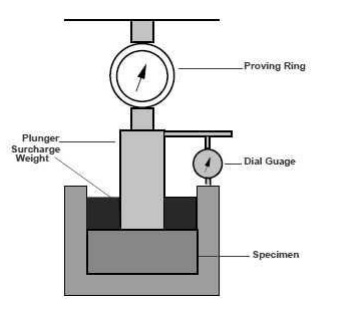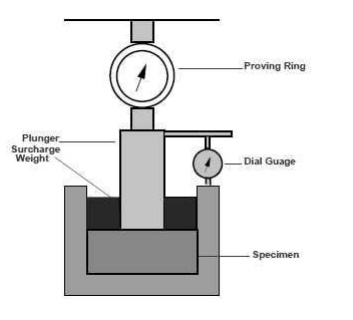Chapter: Civil : Highway Planning and Alignment : Highway Construction Materials And Practice
California Bearing Ratio Test

California Bearing Ratio Test
California
Bearing Ratio (CBR) test
was developed by
the California Division of
Highway as a method of classifying and evaluating soil-sub grade and base course
materials for flexible pavements. CBR test, an empirical test, has been used to
determine the material properties for pavement design. Empirical tests measure
the strength of the material and are not a true representation of the resilient
modulus. It is a
penetration test wherein a standard piston, having
an area of 3 in2 (or 50 mm diameter), is used to penetrate the soil
at a standard rate of 1.25 mm/minute. The pressure up to a penetration of 12.5
mm and it's ratio to the bearing value of a standard crushed rock is termed as
the CBR.
In most cases, CBR decreases as the
penetration increases. The ratio at 2.5 mm penetration is used as the CBR. In
some case, the ratio at 5 mm may be greater than that at 2.5 mm. If this
occurs, the ratio at 5 mm should be used. The CBR is a measure of resistance of
a material to penetration of standard plunger under controlled density and
moisture conditions. The test procedure should be strictly adhered if high
degree of reproducibility is desired. The CBR test may be conducted in
re-moulded or undisturbed specimen in the laboratory. The test is simple and has
been extensively investigated for field correlations of flexible pavement
thickness requirement.
Test Procedure
The laboratory CBR apparatus consists of a mould 150
mm diameter with a base plate and a collar, a loading frame and dial gauges for
measuring the penetration values and the expansion on soaking.
The specimen in the mould is soaked in water for
four days and the swelling and water absorption values are noted. The surcharge
weight is placed on the top of the specimen in the mould and the assembly is
placed under the plunger of the loading frame.
Load
is applied on the sample by a standard plunger with dia of 50 mm at the rate of
1.25 mm/min. A load penetration curve is drawn. The
load values on standard crushed stones are 1370 kg and 2055 kg at 2.5 mm and
5.0 mm penetrations respectively.
CBR
value is expressed as a percentage of the actual load causing the penetrations
of 2.5 mm or 5.0 mm to the standard loads mentioned above. Therefore,

Two values of CBR will be obtained. If the value of
2.5 mm is greater than that of 5.0 mm penetration, the former is adopted. If
the CBR value obtained from test at
5.0 mm penetration is higher than that at 2.5 mm,
then the test is to be repeated for checking. If the check test again gives
similar results, then higher value obtained at
5.0
mm penetration is reported as the CBR value. The average CBR value of three
test specimens is reported as the CBR value of the sample.

Related Topics